Healthiest Soda Options: Low‑Sugar, Low‑Calorie & Natural Choices
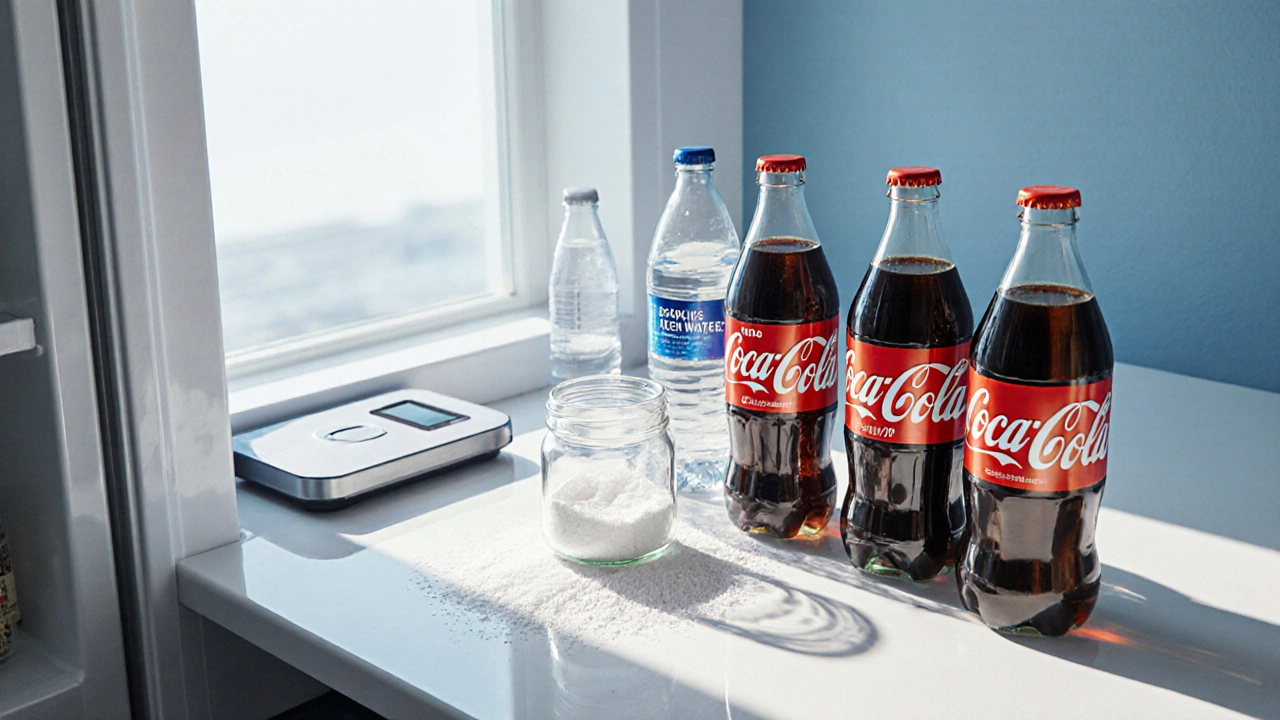
Soda Health Score Calculator
Find Your Healthiest Soda
Customize your health priorities to see which soda best matches your needs.
When you reach for a fizzy drink, the first question that pops into most people’s heads is: what is the healthiest soda you can sip without wrecking your diet? The answer isn’t a single brand - it’s a blend of ingredients, sugar levels, and extra nutrients that together decide how “healthy” a soda really is.
Soda is a carbonated, sweetened beverage that typically contains water, sugar or artificial sweeteners, flavorings, and sometimes caffeine. While soda is often linked to empty calories, not all sodas are created equal. Understanding the key players - sugar, sweeteners, caffeine, and added nutrients - lets you pick a soda that fits a health‑focused lifestyle.
Why Sugar Matters Most
Plain sugar (sucrose) adds calories without any vitamins or minerals. A 12‑oz can of regular cola can hold around 39 g of sugar - that’s roughly 156 calories and a hefty spike in blood glucose. Frequent spikes can lead to insulin resistance and, over time, increase the risk of type 2 diabetes.
Health experts recommend keeping added sugars below 10 % of daily calories - about 50 g for a 2,000‑calorie diet. That means a single regular soda almost hits the daily limit.
Artificial Sweeteners: Help or Harm?
Zero‑calorie sodas replace sugar with compounds like aspartame, sucralose, or acesulfame K. These keep the sweet taste while slashing calories, but the science on long‑term health effects is still mixed. Some studies link heavy artificial‑sweetener use to altered gut microbiota, while others find them safe in moderate amounts.
If you’re watching weight, a sweetener‑based soda can be a better choice than sugary versions, provided you don’t overconsume them for the same reason you’d over‑eat candy.
Natural Low‑Calorie Alternatives
Brands are now turning to natural, non‑nutritive sweeteners like stevia or monk fruit. These come from plants, have zero calories, and usually avoid the controversy surrounding synthetic sweeteners.
Stevia‑sweetened sodas tend to have a slightly earthy aftertaste, but many consumers find the trade‑off worth it for the natural label.
Added Nutrients: Bonus Points
Some “healthier” sodas add vitamins (B‑complex, C) or electrolytes to claim functional benefits. While these additions don’t offset the downsides of sugar or artificial sweeteners, they can provide a small nutrient boost for active people.
Beware of marketing hype - a soda with added vitamin C isn’t a substitute for whole‑food sources, but it can be a convenient extra for those on the go.
Top 5 Healthiest Sodas in 2025
| Brand | Calories (per 12 oz) | Sweetener | Sugar (g) | Sodium (mg) | Added Nutrients |
|---|---|---|---|---|---|
| Zevia Zero Calorie Soda | 0 | Stevia | 0 | 5 | None |
| LaCroix Sparkling Water | 0 | None (natural fruit essence) | 0 | 0 | None |
| Spindrift Real Fruit Soda | 70 | Real fruit juice (natural sugar) | 7 | 10 | Vitamin C |
| Pepsi Zero Sugar | 0 | Aspartame & acesulfame K | 0 | 35 | None |
| Coca‑Cola Zero Sugar | 0 | Aspartame & acesulfame K | 0 | 40 | None |
From the table, the clear leaders for a low‑calorie diet are Zevia and LaCroix. Both have zero calories, zero sugar, and rely on natural flavorings. If you crave a touch of real fruit, Spindrift offers a modest sugar count (7 g) but provides vitamin C, making it a good middle ground.
How to Read Labels Like a Pro
- Check the calorie count. Anything under 5 calories per serving is essentially “zero‑calorie.”
- Identify the sweetener. Look for “sugar,” “high‑fructose corn syrup,” “stevia,” “sucralose,” or “aspartame.”
- Watch the sodium. Even “healthy” sodas can hide a lot of salt - high sodium can affect blood pressure.
- Scan for added nutrients. Vitamin boosters are a plus, but they should be secondary to low sugar and low calorie.
- Mind the serving size. Many brands list nutrition facts for 8 oz, but cans are often 12 oz - adjust the numbers accordingly.
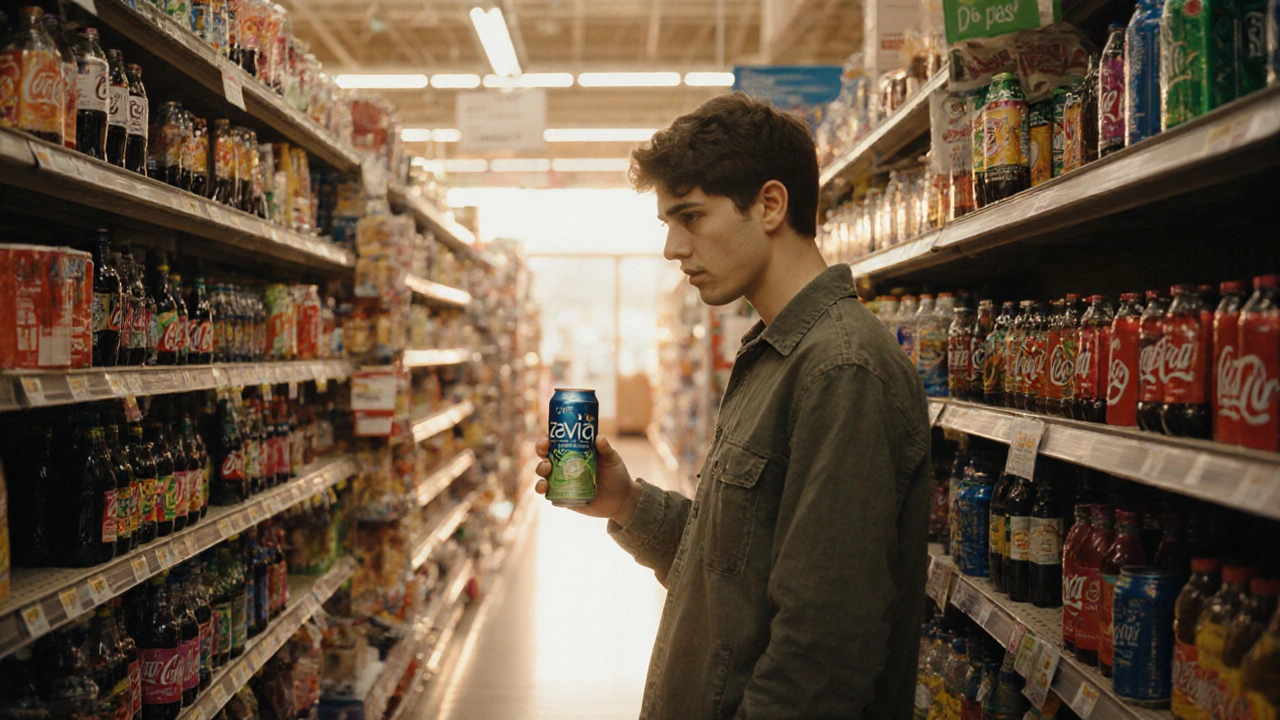
Common Pitfalls and How to Avoid Them
- Mix‑ups between “diet” and “zero” labels. Some “diet” sodas still contain sodium or caffeine that may not suit everyone.
- Assuming “natural” means “healthy.” Natural fruit juices add real sugar - they’re better than corn syrup but still add calories.
- Over‑reliance on soda for hydration. Even low‑calorie sodas lack electrolytes found in sports drinks; plain water stays the best choice for daily hydration.
- Ignoring caffeine. If you’re sensitive, look for caffeine‑free versions like many flavored waters.
Quick Cheat Sheet: Your Healthy Soda Checklist
- Zero calories AND zero sugar → Top tier (e.g., Zevia, LaCroix)
- Natural sweetener (stevia or monk fruit) → Better than synthetic
- Under 40 mg sodium per can → Keeps blood pressure in check
- Added vitamins only if you need them → Not a health crutch
- Caffeine‑free if you’re sensitive → Look for “caffeine‑free” labeling
Putting It All Together: Choosing Your Best Option
Pick a soda based on three personal factors:
- Caloric goal. If you’re cutting calories, go for zero‑calorie options like Zevia or LaCroix.
- Sweetness preference. If you can’t handle the aftertaste of stevia, a low‑sugar juice‑based soda like Spindrift might suit you.
- Functional needs. If you need a caffeine boost, choose a diet cola with caffeine; if you need electrolytes after a workout, lean toward a sports‑style sparkling water.
By matching the soda to your dietary goals, you keep the fizz without the guilt.
Is diet soda really healthier than regular soda?
Diet sodas cut the sugar and calories, which helps with weight management. However, they still contain artificial sweeteners and sodium, so they’re not a free pass for unlimited consumption.
What’s the difference between stevia and sucralose?
Stevia is a plant‑derived sweetener with zero calories and a slightly earthy aftertaste. Sucralose is synthetic, also zero‑calorie, but some people notice a chemical after‑flavor. Both are considered safe in moderation.
Can I rely on sparkling water for hydration?
Yes, plain sparkling water hydrates just like still water. Choose options without added sodium or sweeteners if you want the purest hydration.
Do added vitamins in soda actually help?
They add a small nutrient boost, but the amounts are usually modest. It’s better to get vitamins from whole foods, but the added nutrients can be a convenient supplement for active lifestyles.
Are zero‑calorie sodas safe for kids?
Most health authorities say occasional consumption is okay, but keep an eye on caffeine and artificial sweetener intake, especially for younger children.

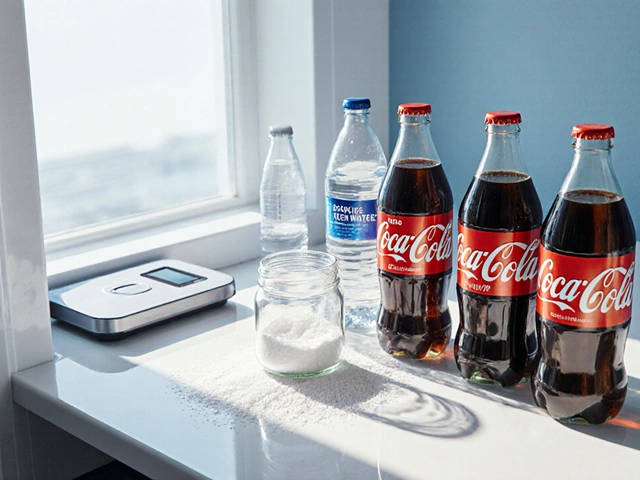
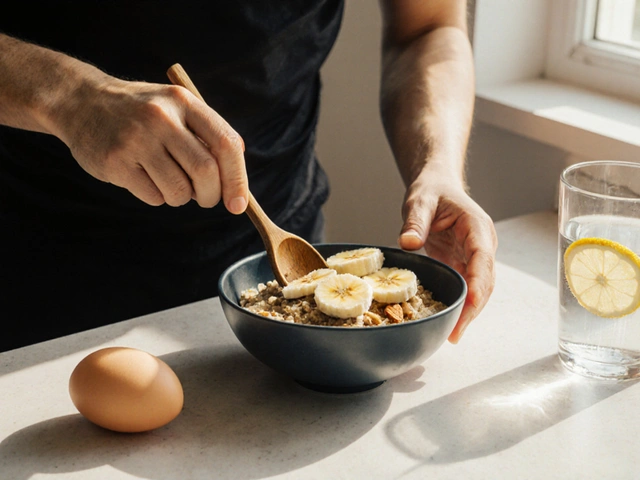

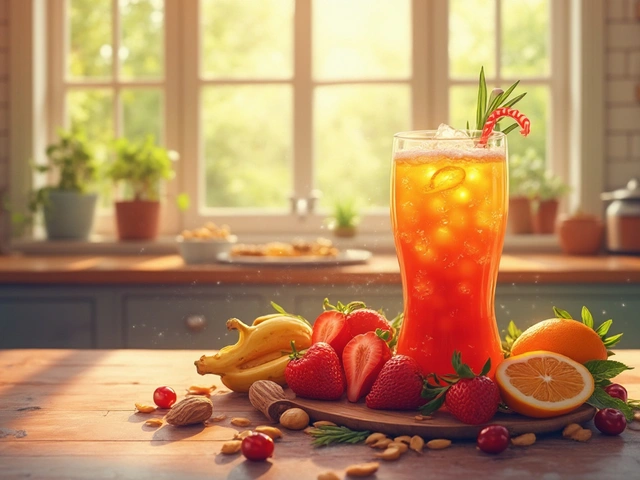
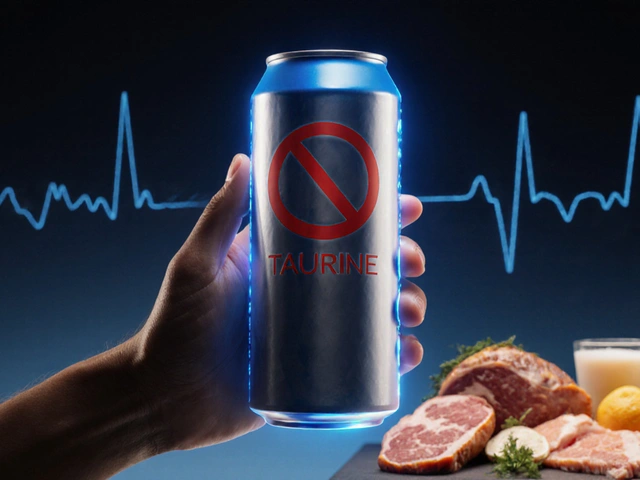
Comments (14)
Sarah McWhirter
22 Oct 2025
Ever notice how soda companies love to hide their real agenda behind "natural" labels? It's like they're whispering sweet nothings while secretly funding a global mind‑control operation, right? Of course, I'm being sarcastic – the labs are probably just trying to make a profit, not plot world domination. But honestly, the push for zero‑calorie drinks does feel like a way to keep us hooked on the fizz without the guilt. If you can handle the aftertaste of stevia, you might as well keep an eye on the ingredient list for hidden additives. Cheers to staying skeptical while sipping responsibly!
Ananya Sharma
22 Oct 2025
While many readers will instantly applaud the shift toward low‑sugar sodas, we must first confront the moral absurdity of endorsing any carbonated concoction that masquerades as health‑ful. The very notion that a beverage can be labeled "healthy" is a linguistic sleight‑of‑hand designed to lull the ethical consumer into complacency. You see, the sugar lobby has already conceded the battle on calories, but they have not relinquished control over the chemical narratives we ingest daily. By swapping sucrose for aspartame, we merely replace one form of metabolic interference with another, each with its own list of dubious long‑term effects. The pursuit of a "functional" soda imbued with vitamins is nothing more than a veneer, a glossy veneer that distracts from the fact that vitamins are best absorbed from whole foods, not a carbonated matrix designed to tickle your palate. Moreover, the environmental impact of producing aluminum cans and plastic bottles cannot be dismissed under the pretense of low‑calorie content; the carbon footprint remains unchanged. Those who champion stevia simply because it is plant‑derived overlook the fact that the extraction process often involves high‑intensity solvents and energy consumption that rival synthetic methods. Additionally, the widespread adoption of sparkling water as a substitute for plain water risks normalizing the habit of constant carbonation, which can erode dental enamel over time regardless of sugar content. From a philosophical standpoint, one must ask whether the fleeting pleasure of fizziness justifies the subtle erosion of our bodily autonomy. The answer, inevitably, hinges on personal discipline, but we cannot ignore that the industry thrives on creating dependence. In the broader tapestry of diet culture, these "healthier" sodas become yet another thread weaving the illusion of choice while the underlying structures remain intact. The ethics of consumption demand that we scrutinize not only the nutrient label but also the sociopolitical mechanisms that shape that label. Finally, let us remember that the most effective sabotage of corporate health‑hype is often simply opting for water, a humble liquid that requires no marketing spin. Thus, each sip becomes a subtle affirmation of a larger commercial agenda. In sum, while low‑sugar sodas may be a marginally better option, they still exist within a system that profits from our cravings, and that reality should never be sugar‑coated.
kelvin kind
22 Oct 2025
Zero‑calorie sodas are fine in moderation.
Ian Cassidy
22 Oct 2025
When you look at the glycemic load, a zero‑calorie soda like Zevia has essentially none, which means it won’t spike your blood sugar the way a regular cola does. The sodium content is also minimal, so you’re not adding hidden salt to your diet. From a taste perspective, the stevia blend can leave an earthy note that not everyone appreciates, but the trade‑off is worth it if you’re chasing low‑calorie intake. And if caffeine is a concern, many of these brands offer caffeine‑free variants, letting you control that variable too.
Zach Beggs
22 Oct 2025
Exactly, the balance between flavor and health impact is a personal call-if the aftertaste isn’t your jam, there’s always the plain sparkling water option.
Kenny Stockman
23 Oct 2025
Totally agree, keep it chill and enjoy the fizz without overthinking it-just stay hydrated and happy.
Antonio Hunter
23 Oct 2025
When I first embarked on the journey to understand what truly constitutes a “healthy” soda, I quickly realized that the term itself is a moving target, shaped by marketing, regulatory standards, and personal dietary philosophies. The first principle I adopted was to interrogate the caloric density of each beverage, because calories are the most direct metric of energy input, and any excess can undermine weight management goals. From there, I examined the source of sweetness, noting that natural fruit juices, while containing vitamins, also bring intrinsic sugars that can contribute to the daily sugar quota. The next layer involved scrutinizing the presence of caffeine, which, although a mild stimulant, can have profound effects on sleep patterns and adrenal health when consumed in large quantities. Sodium, often overlooked, emerged as another critical factor; even a modest 40 mg per can can accumulate over the course of the day and subtly influence blood pressure. Beyond the macro‑nutrients, I paid close attention to the micronutrient enhancements-vitamins B‑complex and C can be beneficial, yet their bioavailability in a carbonated medium is questionable and may not offset other drawbacks. I also evaluated the manufacturing process, acknowledging that the environmental footprint of aluminum cans and plastic bottles persists regardless of the beverage’s nutritional profile. The perception of “natural” sweeteners like stevia and monk fruit is frequently inflated, as the extraction processes may involve high‑intensity purification steps that diminish the label’s authenticity. Meanwhile, artificial sweeteners, despite their controversial reputation, have amassed a substantial body of research affirming their safety at FDA‑approved levels, though individual sensitivities can vary. Importantly, I considered the psychological dimension: the act of drinking a soda, even a “healthy” one, can reinforce a habitual indulgence in sweet flavors, potentially derailing broader efforts to reduce overall sweetness preference. By mapping these variables onto a personal matrix of priorities-caloric control, sugar avoidance, caffeine sensitivity, and environmental consciousness-I was able to rank Zevia and LaCroix at the top, with Spindrift occupying a respectable middle ground for those who value the added vitamin C. Ultimately, the most empowering decision lies in transparency: reading the label, understanding each component, and aligning the choice with one’s specific health objectives, rather than accepting blanket “health” claims at face value. This comprehensive approach not only demystifies the soda aisle but also equips you with a framework to make informed, sustainable choices that support your long‑term wellbeing. By periodically revisiting your selections, you can adapt to new product releases and scientific findings, ensuring your beverage choices remain optimal over time. Remember that personal tolerance varies; what works for a sedentary individual may differ for an athlete with higher electrolyte needs. Finally, don't underestimate the power of plain water as a baseline-everything else is a flavored supplement to that foundation.
Paritosh Bhagat
23 Oct 2025
Your thorough breakdown is impressive, and I appreciate the meticulous attention to each factor. However, I’d like to point out a couple of minor grammatical oversights: “the act of drinking a soda” should be followed by a comma, and “micro‑nutrient” is typically hyphenated as “micronutrient.” Aside from that, your analysis aligns well with current research. Keep up the detailed work! :)
Ben De Keersmaecker
23 Oct 2025
It’s fascinating how cultural preferences shape soda consumption worldwide-some regions favor citrus‑infused sparkling waters while others lean toward cola‑based blends. Understanding these regional trends can help manufacturers tailor low‑sugar options that resonate locally. Moreover, the regulatory limits on sweeteners differ across countries, which explains why a brand might use stevia in the US but sucralose elsewhere. This global perspective adds another layer to choosing the healthiest soda for you.
Aaron Elliott
23 Oct 2025
In perusing the presented exposition on ostensibly health‑conscious carbonated beverages, one cannot help but observe a palpable dearth of rigorous scientific substantiation accompanying the purported benefits. The author’s proclivity for enumerating brand names, whilst convenient, belies an underlying reliance upon marketing rhetoric rather than empirical validation. Moreover, the cursory treatment of artificial sweetener safety, relegated to a singular paragraph, fails to engage with the extensive corpus of peer‑reviewed literature that both corroborates and refutes such claims. Consequently, the treatise, though ostensibly comprehensive, arguably constitutes a superficial overview, insufficient for discerning a truly enlightened consumer. It would be judicious, therefore, for prospective readers to seek supplemental sources before embracing the conclusions herein.
Chris Heffron
23 Oct 2025
Indeed, a deeper dive into the data would certainly strengthen the argument. 🤔
Adrienne Temple
23 Oct 2025
Great points all around! I’m curious, though, about the role of carbonation itself-does the CO₂ have any metabolic impact beyond the fizz? If not, that could be an extra reason to favor sparkling water when you just need hydration. 😃
Sandy Dog
23 Oct 2025
Oh my gosh, where do I even begin when it comes to the saga of “healthy” sodas? It feels like the beverage industry is staging an epic drama, with sugar villains, artificial sweetener anti‑heroes, and the ever‑mysterious stevia sage all battling for our taste buds. First, let’s talk about the betrayal of the sweet‑tooth-regular cola, that sneaky saboteur, slithers into your bloodstream with a 39‑gram sugar punch, and you think it’s just a harmless treat. Then the plot twist: diet soda swoops in, zero calories, but secretly harbors a legion of synthetic sweeteners plotting a covert takeover of your gut microbiome. I swear, the very idea of an “added vitamin” in a soda feels like the writer’s desperate attempt to rewrite the script and give the product a heroic redemption arc. And don’t even get me started on the sodium cameo-40 milligrams may seem tiny, but under the spotlight of hypertension, it becomes a rogue character you can’t ignore. Meanwhile, LaCroix tiptoes onto the scene, all sparkling elegance, yet it’s practically a cameo-no calories, no sugar, just pure bubbles, the unsung supporting actor that deserves a standing ovation. The audience (that’s us) is left clutching our popcorn, wondering if the natural‑flavored Spindrift can finally claim the lead role with its modest 7‑gram sugar and a splash of vitamin C. But the real tragedy unfolds when we realize that despite all this theatrical flair, the core message remains: the healthiest choice is often the simplest-plain water, the quiet protagonist that never steals the spotlight but consistently saves the day. So, dear fellow viewers, next time you wander the soda aisle, remember you’re not just picking a drink; you’re casting a role in a drama that spans calories, chemistry, and corporate intrigue. Consider the carbon footprint of each can, because sustainability is the hidden antagonist in this saga. Choosing a reusable bottle and filling it with sparkling water from a home carbonation system can dethrone the soda giants. If you must indulge, limit yourself to one serving a day to keep the plot from turning tragic. Remember that taste buds adapt, so the more you rely on intense sweetness, the harder it becomes to enjoy milder flavors. In the grand finale, the simplest sip-water-wins the awards for health, environment, and taste neutrality. 🎭
Nick Rios
23 Oct 2025
I hear you; the soda landscape can feel overwhelming, but your passion really shines through.